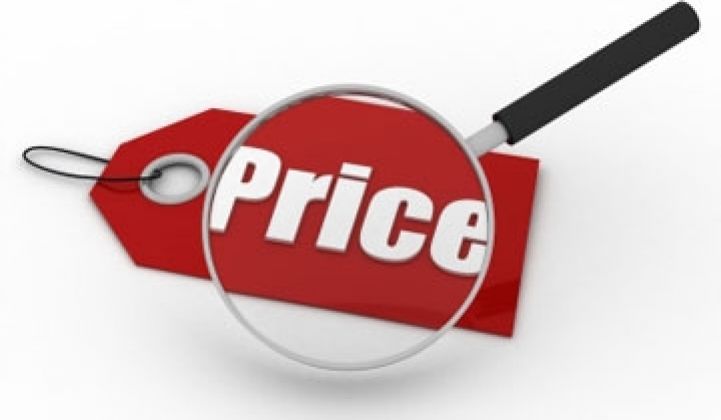Solyndra has got some work to do in the pricing department and its own auditors have their doubts about the company.
In the company's amended S-1 statement filed with the Securities and Exchange Commission, Solyndra says that the cost of its cylindrical solar panels is $3.24 per watt, including mounting, or 66 percent higher than the average cost of a crystalline silicon solar panel.
"Our average sales price was $3.24 per watt, which was $1.29 per watt, or approximately 66%, higher than the $1.95 average sales price per watt of leading crystalline silicon photovoltaic manufacturers during the same period," the company stated. "As a result, certain system owners who focus more on the up-front price of solar panels than on achieving the lowest levelized cost of electricity per kilowatt hour, or LCOE, may choose the product offerings of those competitors that have a lower initial panel purchase price."
In a market ruled by commodity-like pricing, "may choose the product offerings of those competitors" is a bit of an understatement. Crystalline panels will likely descend to $1.50 to $1.75 by the middle of the year, according to GTM Research analyst Shayle Kann.
Auditor PricewaterhouseCoopers, meanwhile, added a "going concern" statement to the amended S-1. These forms are often filled with cautionary language, and the statement is often added by auditors when a company has recurring losses like Solyndra, but it's hardly a warm endorsement.
"The company has suffered recurring losses from operations, negative cash flows since inception and has a net stockholders' deficit that, among other factors, raise substantial doubt about its ability to continue as a going concern," PricewaterhouseCoopers wrote in the filing.
Solyndra produces copper indium gallium selenide (CIGS) solar panels that are cylindrical rather than flat. CIGS is an onerous material to work with and applying it to a cylinder rather than a flat piece of glass or aluminum increases the difficulty quotient. As a result, skeptics about Solyndra abound.
Nonetheless, Solyndra is one of the most successful companies ever in terms of raising funds. Through Oct. 3, 2009, Solyndra raised an aggregate of approximately $970 million through equity financings, including a $283 million round E and $281 million round F. It has also amassed $535 million in federal loan guarantees.
To date, the company has lost a lot of money. In the fiscal year that covered 2009 and ended just a few months ago, it lost $172.5 million, which is less than the $232.1 million loss it tallied the year before but more than the $114 million loss in 2007. Since its inception, Solyndra has lost $557.7 million.
"We expect to continue to incur significant operating and net losses and negative cash flow from operations for the foreseeable future," the company said in the amended S-1. (The latest loss figures are new to the latest S-1.)
Revenue grew from $6 million in 2008 to $100.5 million in 2009.
Back to Pricing
Solyndra's price includes mounting. Mounts, however, only add around 40 cents per watt to the price of crystalline silicon solar panels, said GTM Research analyst Shyam Mehta, so Solyndra is still well above the norm. Earlier in the year, Mehta estimated that Solyndra's average sales price came to $3.42 per watt based around sales and other data in the initial S-1 filed in December 2009, so a golf tap to Mehta for being somewhat close. (The company didn't state the number directly.)
Solyndra's average manufacturing price, however, is closer to $6.29, Mehta added. Solyndra has not provided precise public data on its costs, but admits they are higher than the sale price:
"Because our cost of producing our photovoltaic systems has exceeded their selling price to date, our cost of revenue has also included provisions to write down the carrying value of our work in process and finished good inventories to their market value," the S-1 states.
Other tidbits:
--Fab 1, the main production facility, has a current annual capacity of 54 megawatts, judged from recent production. Production capacity at the plant will expand to 110 megawatts by the fourth quarter.
--Solyndra shipped 1.6 megawatts of solar in 2008, but 30 megawatts last year.
--80 percent of sales go to Europe and to a small number of customers.
"For the fiscal year ended January 3, 2009, revenue from Geckologic GmbH and Phoenix Solar AG accounted for 29% and 27%, respectively, of our total revenue. For the fiscal year ended January 2, 2010, revenue from USE Umwelt Sonne Energie GmbH, Alwitra GmbH, Carlisle Syntec Incorporated and Sunconnex B.V. accounted for 23%, 14%, 13% and 10%, respectively, of our total revenue," the S-1 states.



